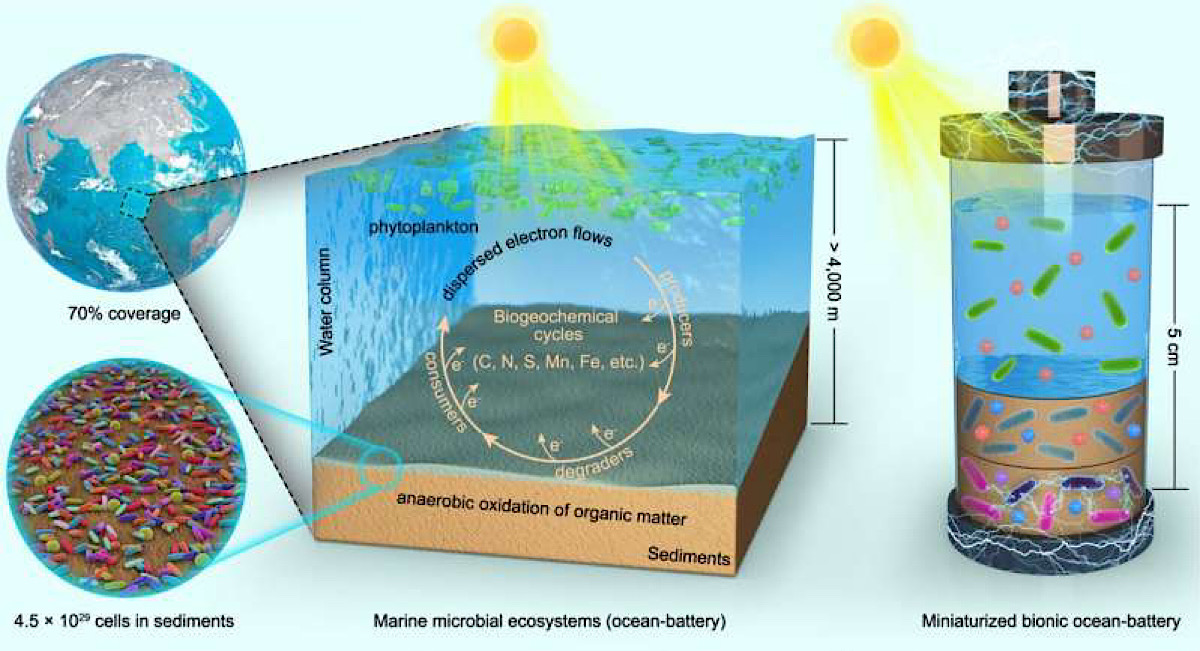The structure comparison of the marine microbial ecosystems and the miniaturized bionic ocean-battery. Both systems possess same physical structure (water column layer and sediment layer) and same ecological structure (primary producers, primary degraders, and ultimate consumers). The marine microbial ecosystems are huge with the average depth exceeding 4000 m, while the miniaturized bionic ocean-battery was compacted in a vessel with a depth of 5 cm, thus accelerating the electron flow by shortening the electron transfer distance. In marine microbial ecosystems, especially in anaerobic sediments, the highly diversified microbial species and their complex interactions make the electron flow dispersed to various microbially mediated biogeochemical processes, i.e., elemental cycles. In contrast, the miniaturized bionic ocean-battery fabricated using the synthetic community only contains four microbial species connected by the specific energy carriers. This simplified structure targetedly directs electrons towards the only target, i.e., electrical current.
By Zhang Nannan
The researchers from the Institute of Microbiology of the Chinese Academy of Sciences have developed a miniaturized bionic ocean-battery, a bio-solar cell that converts light into electricity, by mimicking the basic ecological structure of marine microbial ecosystems. This study was published in Nature Communications.
Oceans cover about 70% of the Earth’s surface area. From the perspective of energy, marine ecosystems are a huge solar energy bioconversion system in which microorganisms dominate the energy conversion processes.
Energy conversion in marine ecosystems begins with photosynthesis. Photosynthetic microorganisms, called primary producers, located in the euphotic zone of water column, absorb solar energy and convert photons into electrons that are used to fix carbon dioxide into organic matter. The organic matter is partly consumed by plankton living in the water column and partly deposited into the marine sediments where facultative anaerobic or strictly anaerobic microorganisms mineralize the complex organic matter to carbon dioxide through successive oxidation.
Continue reading… “Researchers fabricate miniaturized bionic ocean-battery”













